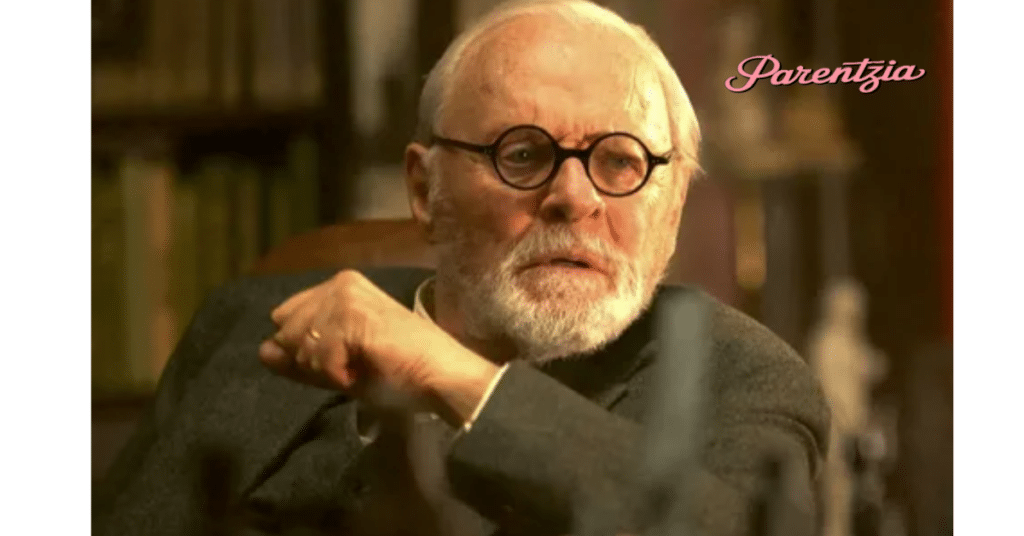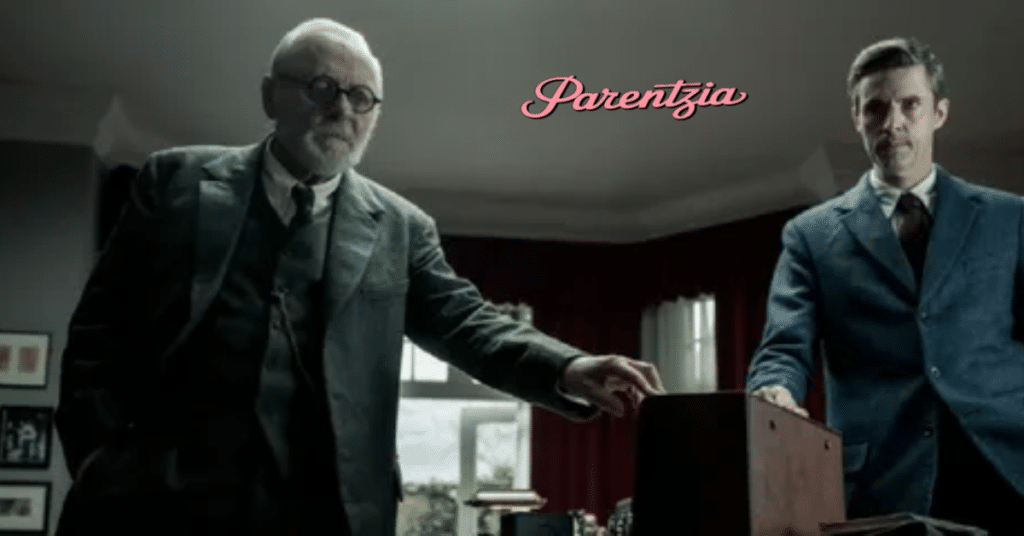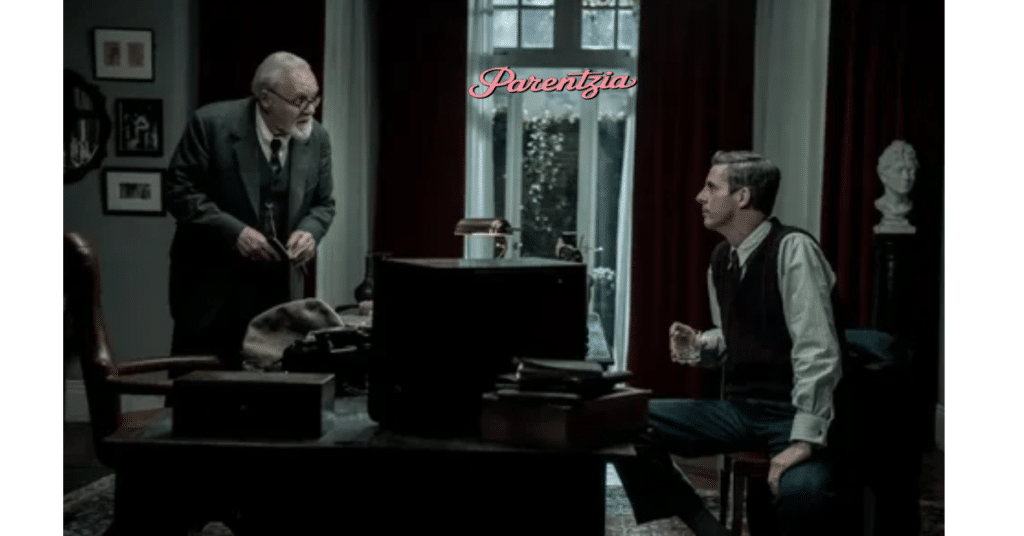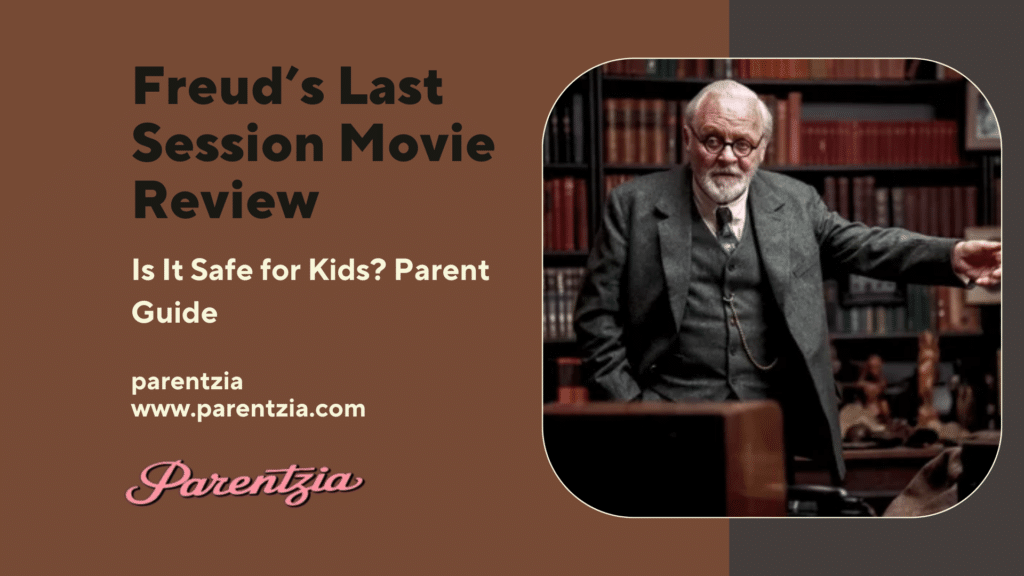Freud’s Last Session, starring the legendary Anthony Hopkins and distributed by Sony Pictures Classics, brings a deeply intellectual and emotional experience to the screen. This historical drama explores the profound dialogue between two monumental figures: Sigmund Freud and C.S. Lewis. With its themes of life, death, faith, and reason, the film provides much for adult viewers to ponder. But for parents, the question is: Is it safe for kids? Let’s dive into an analysis of the film’s story, visuals, and themes to assess its PG-13 age rating and determine if this film is truly kid-friendly.
Plot Summary Without Spoilers
Set during the early days of World War II in London, Freud’s Last Session imagines a meeting between two influential thinkers: the atheist and psychoanalyst Sigmund Freud and the Christian author C.S. Lewis. While the film is fictional, it’s inspired by historical facts—Freud was a known atheist near the end of his life, and Lewis was on the brink of becoming a well-known Christian apologist.
Freud, nearing the end of his life and battling cancer, invites Lewis for an intellectual debate. What follows is a philosophical sparring on life’s biggest questions: Is there a God? Can faith and science coexist? What is the meaning of suffering? These are the questions Freud and Lewis explore, set against the looming shadow of WWII, adding urgency and gravity to their discussions.
You might also like “Aquaman and the Lost Kingdom Movie Review | Safe for Kids?”

Visual and Cinematic Elements
Cinematography and Setting
The film, which is beautifully crafted by Sony Pictures Classics, transports audiences to wartime London. The production design is meticulous, capturing Freud’s study with rich detail—from the worn leather of his furniture to the personal items scattered across his desk. The gloomy, wartime atmosphere also underscores the weight of the discussions.
- Lighting: The dim lighting mirrors the serious tone of Freud and Lewis’s conversation, giving the film an almost sepia quality.
- Costumes: Period-specific clothing adds authenticity to the film. Freud is dressed in his characteristic suit and tie, while Lewis’s attire reflects his modest, professorial style.
How Visuals Enhance the Story
The muted color palette and close-up shots of each character’s face add intimacy to their intellectual confrontation. These visual choices reinforce the film’s depth and help viewers focus on the actors’ performances, particularly Anthony Hopkins, whose portrayal of Freud is both commanding and vulnerable.
Themes and Philosophical Depth
Exploring Life’s Big Questions
Freud’s Last Session is driven by intellectual themes rather than action. Freud and Lewis engage in a candid and sometimes tense discussion on subjects like:
- Faith vs. Science: Freud, a lifelong atheist, questions the validity of religious belief, while Lewis defends faith as a source of meaning.
- The Nature of Suffering: Freud, suffering from terminal illness, views suffering as a biological reality, while Lewis considers it a spiritual trial.
- Mortality: Freud’s approaching death brings urgency to his reflections on life’s meaning, a theme many viewers may find resonant.
Quote: “To really see life as it is, one must strip away the illusions.” — Sigmund Freud (portrayed by Anthony Hopkins)

The film’s intellectual debate requires focus, making it less accessible for younger audiences. However, for mature teens or adults, this is a rare chance to explore deep philosophical and psychological questions in a cinematic format.
Why These Themes Are Better Suited to Adults and Older Teens
The film’s themes are abstract and complex, requiring a certain level of emotional maturity to fully appreciate. While older teens may be able to engage with these themes, younger viewers may struggle to understand Freud’s and Lewis’s existential concerns.
Freud’s Last Session: Age Appropriateness and PG-13 Rating Analysis
Breakdown of PG-13 Rating
According to Sony Pictures Classics, Freud’s Last Session has a PG-13 age rating due to:
- Mature Thematic Elements: Topics like mortality, faith, and atheism are central to the film, which may be challenging or even troubling for some younger viewers.
- Language: The film includes a few uses of mild profanity, used sparingly but present.
- Psychological Intensity: The deep and intense dialogue may feel heavy or overwhelming for children under 13.
The PG-13 rating suggests that the film is suitable for teens but may require parental guidance.
| PG-13 Content Breakdown | Details |
| Mature Themes | Existential discussions on faith, science, and death. |
| Profanity | Limited use of mild language. |
| Emotional Intensity | Heavy dialogue and philosophical themes. |
Why It’s Not Suitable for Younger Kids
Given the film’s cerebral nature, young children are unlikely to find Freud’s Last Session engaging. Its lack of action, reliance on philosophical debate, and abstract themes make it a challenging watch for those under 13, and perhaps even older.
Parent’s Guide: Sensitive Content and Discussion Points
Sensitive Topics to Consider
For parents of older teens, Freud’s Last Session can provide valuable discussion points, but it’s important to prepare for potentially sensitive topics:
- Existential Discussions: The film’s debates about the existence of God, the nature of suffering, and life’s purpose may challenge or affirm a teen’s developing beliefs.
- Historical Context: Understanding Freud and Lewis’s positions may require knowledge of pre-WWII Europe, Freud’s theories, and Lewis’s literary works.

Discussion Questions for Parents and Teens
For parents who choose to watch the film with their teens, here are some discussion questions to help unpack its themes:
- Why do you think Freud was so opposed to religion?
- How does C.S. Lewis’s belief in God shape his view of suffering?
- Do you think science and faith can coexist?
These questions can help teens articulate their thoughts on the film’s heavy themes and reflect on how they relate to their own beliefs.
Educational and Conversational Value
Learning Moments for Mature Teens
While not a conventional educational movie, Freud’s Last Session can be a springboard for learning about psychology, philosophy, and history. Here are some educational takeaways:
- Introduction to Psychoanalysis: Freud’s arguments reveal his foundational ideas, such as the role of the unconscious and the influence of childhood on adult behavior.
- Philosophical Inquiry: Lewis’s perspective provides an introduction to Christian apologetics, as well as the philosophical arguments for and against the existence of God.
- Historical Figures: Viewing Freud and Lewis not just as characters, but as real historical figures, may inspire further research on their lives and works.
Suggested Reading and Resources
For parents or teens interested in diving deeper, here are some recommended resources:
- The Problem of Pain by C.S. Lewis – Explores suffering and faith, a central theme in the movie.
- Civilization and Its Discontents by Sigmund Freud – Provides insight into Freud’s views on society and human nature.
- A Brief History of Time by Stephen Hawking – For teens interested in the science vs. faith debate.
Comparative Analysis: How Freud’s Last Session Fits in the Genre
Freud’s Last Session is part of a niche genre of historical dramas centered on intellectual dialogue. For context, here’s how it compares to similar films:
| Movie | Similarities to Freud’s Last Session | Differences |
| The Sunset Limited | Philosophical debate between two characters | Focuses on life and death, without historical basis |
| My Dinner with Andre | Heavy on intellectual dialogue, minimal action | Less emphasis on philosophy, more on personal views |
| God’s Not Dead | Debate between belief and atheism | Designed for a faith-based audience |
While Freud’s Last Session is slower-paced and dense, its focus on real historical figures makes it stand out. It’s unique in its thoughtful examination of Freud’s and Lewis’s contrasting worldviews, all set against a historical backdrop.
Final Verdict: Is Freud’s Last Session Suitable for Kids?
In summary, Freud’s Last Session is best suited for mature teens and adults, particularly those interested in philosophy, psychology, and history. The PG-13 age rating accurately reflects the intellectual intensity and thematic complexity of the film, which may be too advanced for younger viewers.
Key Takeaways for Parents
- Audience: Recommended for mature teens (15+) and adults.
- Core Themes: Faith, science, mortality, suffering.
- Sensitive Content: Philosophical and existential topics, light profanity.
Conclusion
Freud’s Last Session, starring Anthony Hopkins as Sigmund Freud, is a thought-provoking film that explores profound themes. With the backing of Sony Pictures Classics, this historical drama offers viewers a chance to delve into a fictional yet insightful encounter between two great thinkers. For parents, it’s a film that, while not exactly kid-friendly, can provide a unique experience for mature teens interested in history and philosophy.
If you’re a parent considering this film, be ready for some fascinating discussions afterward—it’s rare to see such deep topics portrayed so beautifully in cinema.

Tina Grey is an experienced blogger with a passion for uncovering the best in film. With years of writing and a keen eye for detail, Tina brings insightful reviews and engaging content to Parentzia. Her deep love for movies, combined with her expertise, helps readers discover must-watch films across genres. When she’s not reviewing, Tina enjoys exploring new cinematic trends and sharing her love of film with her audience.







